The main issues we’ll discuss in this Richmond tankless water heater troubleshooting are:
- No Hot Water
- Water Is Not Hot Enough
- Water Is Too Hot
- Sediment Build-Up
- Cold Water Sandwich
- Heat Exchanger Is Too Hot
- Fan Rotates After Operation
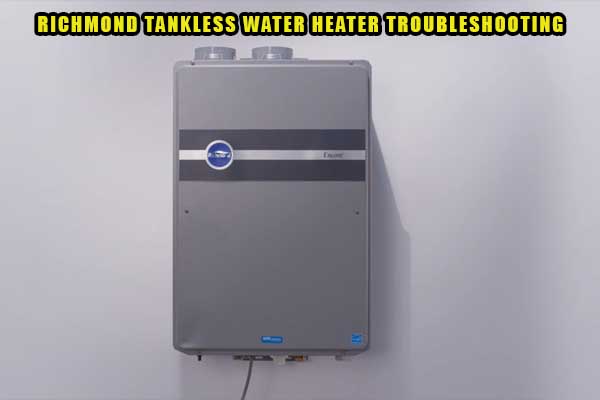
The good news is we’ll not only discuss the problems but also present their solutions in detail. Without further ado, let’s dive in!
Table of Contents
- Richmond Tankless Water Heater Troubleshooting [A Complete Guide]
- 1. No Hot Water
- 2. Water Is Not Hot Enough
- 3. Water Is Too Hot
- 4. Sediment Build-Up
- 5. Cold Water Sandwich
- 6. Heat Exchanger Is Too Hot
- 7. Fan Rotates After Operation
- How To Maintain Richmond Tankless Water Heaters
- FAQs:
- What to do if you smell gas from your tankless water heater?
- Do Richmond tankless water heaters have a pilot light?
- How to adjust the temperature in Richmond encore heaters?
- How to reset Richmond tankless water heater?
- Why should you use tankless water heaters?
- How to protect your property if the water heater leaks?
- Conclusion
Richmond Tankless Water Heater Troubleshooting [A Complete Guide]
Tankless water heaters are great as they are highly energy efficient. However, it doesn’t mean that they’re immune to problems.

We’ll go over the most common issues you can face with your Richmond tankless water heater in this section.
Note: Read our ultimate guide on Richmond gas water heater troubleshooting and how to fix it.
1. No Hot Water
There are plenty of reasons that can cause no hot water issue in your tankless water heater. The most common ones are
- The electrical power to the heater is disconnected or the heater is switched off.
- Inadequate gas supply.
- The water shut-off valve is not fully opened.
- Freezing of the water piping.
- Setting the thermostat too low.
- Not opening the hot water faucet completely.
However, they’re not the only issues that can lead to the no hot water issue. If you’re still facing this problem, it could also be due to the following reasons:
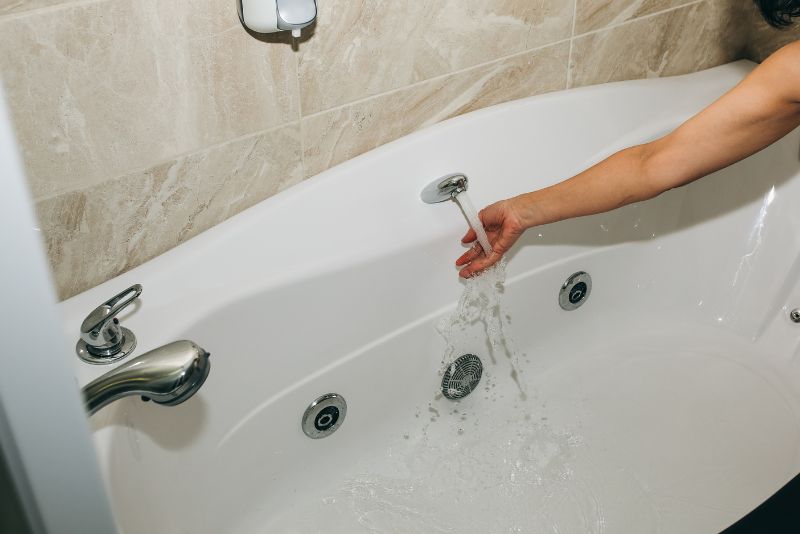
- Malfunctioning mixing valves.
- Clogged or dirty water filter.
- Scale build-up in the heat exchanger.
- Reversed hot and cold water lines.
- Dirty fixture aerator.
If you’re using a Richmond tankless electric water heater, you may also face this issue. It can be due to the same reasons mentioned above. But a poor flow rate can also cause this issue.
Solution:
As you can see, we’re dealing with a pretty big list of potential issues here. Let’s rule them out one by one. First thing first, make sure your power outlet is okay and the circuit breakers are not tripped. Turn the heater on by pressing the “Power” button and see if it has power.
The next thing you have to make sure of is that you have a proper gas supply. If the gas lines are clogged, the heater won’t work properly. Check that the gas valve is on and replace the gas lines if needed.
Thirdly, check if the water shut-off valve is not fully open. If it’s not, then open it completely and that’ll solve the issue. Next, check if the pipes are frozen. If they are, allow them to thaw and you’ll eventually get sufficient hot water.
Check the thermostat and see what temperature you’ve set. If you’ve set it too low, turn it up. Next, inspect whether you’ve fully opened the hot water faucet. If not, open it completely and that’ll solve the no hot water issue.
As we’re dealing with many potential issues, the above picture is a quick summary of the fixes. Hopefully, that’ll help you narrow down the issue and act fast if you’re dealing with the no hot water problem.
However, we’re not even close to being done and have only discussed the first half of this problem. The next thing you need to be on the lookout for is the mixing valves. If they’re not working properly, you have to replace them.
After that, you should check the water filter. If it’s clogged or dirty, you need to take it out and clean it. Here’s a step-by-step guide on doing it:
Step 01 – Drain The Heater
- Switch off the water heater
- Disconnect the power supply to it.
- Turn off the cold water supply.
- Drain the water heater. If you don’t know how to do it, we’ll discuss how to do it later on in this article.
Step 02 – Remove The Water Filter
- Locate the water filter at the base of the cold water line.
- Unscrew it and slide it out of there.

Step 03 – Clean & Put The Water Filter Back In
- Start by placing the filter under running water to get rid of the dirt.
- Next, use a soft brush and get the sediment out of it.
- Place the filter back into the cold water line and tighten it.
- Reconnect the power and cold water supplies to the heater.
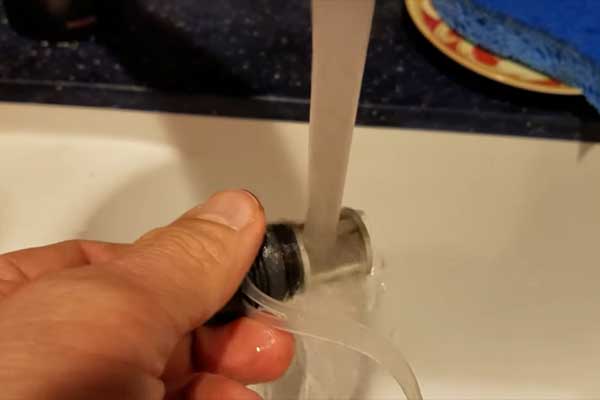
If a dirty filter was causing the issue, that’s how you can clean it and solve the problem. But if that’s not it, the next possible culprit here is the build-up of scale in the heat exchanger. You can solve it by flushing it. Follow these steps to do it:
- Turn the remote control of the heater on.
- Turn off your heater gas supply.
- Turn off the water supply to the unit.
- Keep pressing the down arrow button until you get to the lowest temperature.
- Press and hold the down and up arrow buttons together for 5-10 seconds.
- Turn the gas and water supply back on.
If that doesn’t work and you’re seeing error codes that point to a bad heat exchanger, you should call a qualified technician. At times, you may even have to replace the heat exchanger.
Clean the aerator if it’s clogged or dirty. Finally, flip the hot and cold water lines if they’re reversed. Next, ensure that you’re achieving the recommended minimum flow rate if you’re using a tankless electric heater.
And that’s the complete fix for all the reasons that can keep you from getting hot water in your heater. Here’s a quick summary of the second part of the fixes so that you don’t get lost.
2. Water Is Not Hot Enough
If the water is not hot enough in Richmond condensing tankless water heaters, here’s a list of the most common reasons behind it:
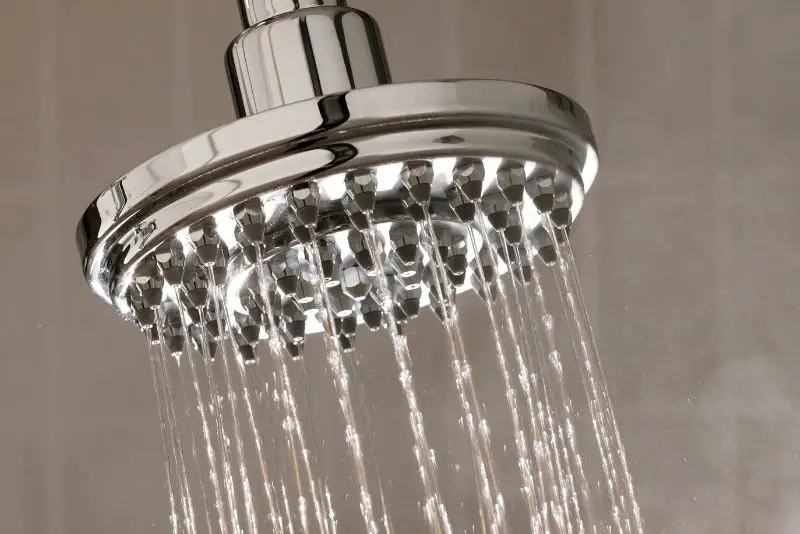
- You’ve set the thermostat too low.
- The gas valve is not opened completely.
- Using multiple hot water faucets at the same time.
- The gas pressure is too low.
- There’s a bleed over in any of the hot water fixtures.
Besides these issues, you may face the same issue in a Richmond tankless electric water heater due to the following reasons:
- The flow rate of the water is too high.
- Incorrect wiring.
- Thermal loss due to long pipes.
- The voltage is less or more than the range of 120-240 volts.
- Mixing excessive cold water.
Solution:
Now that we know the problems, let’s go over the solutions depending on the issues. Firstly, turn up the thermostat if you’ve set it too low as that’ll increase the temperature of the water. If you can’t set the temperature you can read our ultimate guide on how to adjust the temperature on the Richmond water heater.
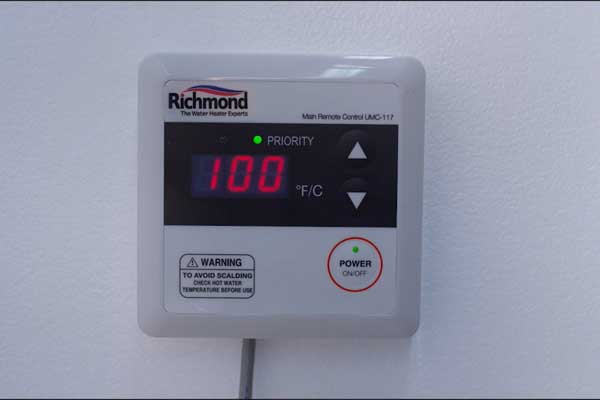
Make sure the gas valve is opened completely as an inadequate gas supply won’t heat the water properly. Check the gas pressure if you have a manometer or get it checked by a professional. If there are issues with it, get your local utility company to fix it for you.
The next thing to check is whether you’re using multiple faucets together. It’s not an issue with the heater as you’re trying to use it beyond its capacity. You can solve this problem by installing a mini tank to fulfill your hot water needs.
Finally, if there’s a bleed over in one of the hot water fixtures, it’s a good idea to hire an expert to solve it. We don’t recommend you attempt fixing this one on your own as all problems don’t have a DIY solution.
The above picture was a summary of how you can solve the issues in condensing tankless heaters. Now let’s move on to their electric counterparts.
Firstly, if the water flow rate is too high, the heater won’t be able to fully heat the water. In that case, you need to install an aerator to decrease the flow rate of water to your heater.
Secondly, you’ll have to correct the wiring if there are any issues with it. It’s a common problem for people who have newly installed their heaters. If that applies to you, find the fault with the wiring and correct it.
If your hot water faucet is at a long distance from your water heater, it’s normal for the temperature to be low. The closer the faucets, the hotter the temperature will be. You can fix it by increasing the settings on the thermostat.
The water heaters are programmed to work for a range of 120-240 volts. If you have a lower or higher voltage, your heater won’t work properly. Check the voltage in your house. If it’s out of that range, you can either increase the temperature in your heater or upgrade to a larger unit.
Finally, mixing too much cold water can also cause this issue. Adjust the faucet so that you can decrease the amount of cold water that’s being mixed. You need very little cold water in tankless water heaters compared to their tank counterparts. Hopefully, you’ll get hot water from your heater now.
Here’s how you can fix the water not being hot enough problem in your Richmond tankless essential heater at a quick glance:
3. Water Is Too Hot
Another common issue with Richmond tankless heaters is that the temperature of the water will be too hot. Here are the most common reasons behind overheating water:
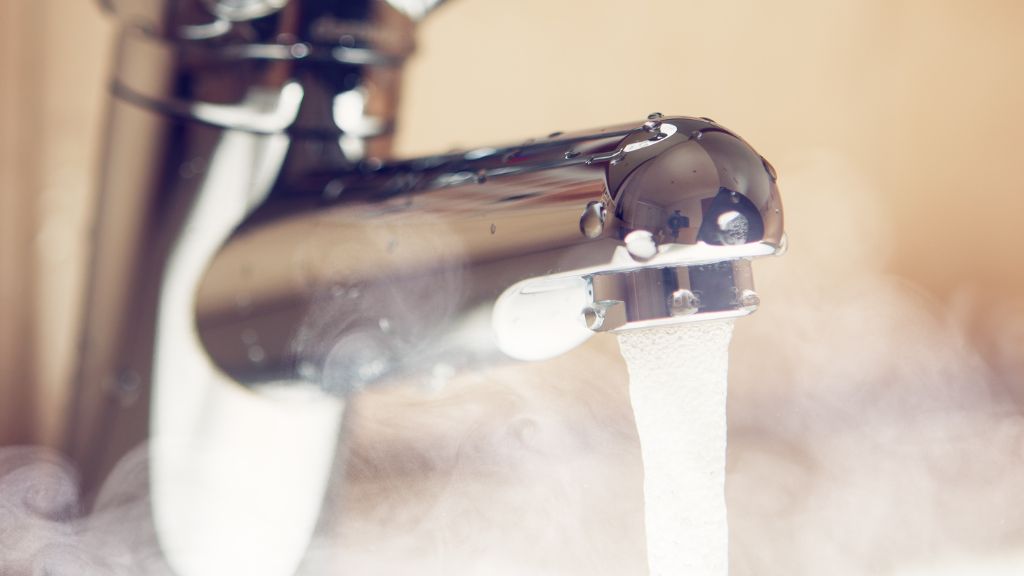
- Setting the temperature too high.
- Partially opened water shut-off valve.
- Only a small amount of water has been heated.
- The hot water faucet’s temperature is too hot.
Solution:
First, check if you’ve accidentally set the thermostat too high. You can fix it easily by lowering the temperature settings. Next, check the water shut-off valve and make sure that it’s fully open.
If only a small amount of water is heated, that means you have a poor flow rate. Increase the flow rate in your house and make sure it matches the required settings of the heater.
For example, the minimum flow rate required in a Richmond condensing 9.5 GPM indoor tankless heater is 0.4 GPM. The maximum flow rate for this heater is 1.3 GPM. Similarly, check your owner’s manual, find the recommended flow rate, and have it adjusted to that.
Finally, the next thing you should inspect is if the temperature of the hot water faucet is too high. It can be due to the wrong aerator size, little flow of water, or the failure of an internal part.
If replacing the aerator or adjusting the flow rate doesn’t fix the issue, we recommend hiring a technician. Here’s a quick look at everything we’ve discussed regarding the overheating water issue:
4. Sediment Build-Up
Magnesium and Calcium are the two minerals that are the enemies of tankless water heaters. If you live in an area where you’re supplied hard water, your heater’s water filter can get quickly clogged up and you may also end up leaving a sediment build-up inside your tankless water heater.
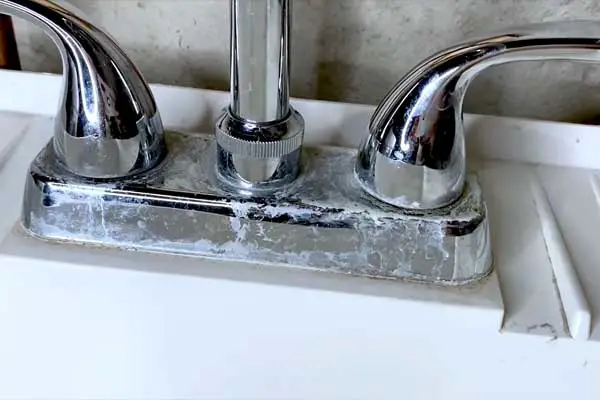
A common sign of knowing if you have sediment build-up is having smelly and discolored water from your hot water faucets. If you don’t take care of it quickly, it can also affect the heat exchanger.
Solution:
You’ll have to flush the heater to get rid of this issue. The first thing you need to do is to drain the water heater. Follow these steps to do it:
- Switch off the water heater by pressing the power button and turn off the gas supply to the heater as well.
- Wait for a few seconds and disconnect the heater from its power outlet.
- Open all the hot water faucets and run them until you get cold water. Close the water shut-off valve.
- Place a bucket or container under the drain plug to catch the water. Remove the drain plug, drain valve, and water filter.
- Attach one end of a garden hose to the drain valve in the hot water line and place the other end where you want to discard the water.
- Once you get rid of all the water in the tank, you can put everything back together. But we won’t be doing that if we plan to flush the heater next.
Next, you can proceed to flush the heater. There are many flush kits available that you can use to clean your tankless water heater. You can always hire an expert if you’re not comfortable doing it yourself. However, if you want to do it yourself, here are the steps:
Step 01 – Setting Up The Flush Kit
- Open the pressure relief valve connected to the hot water lines to let go of the pressure built up in the heater.
- Connect the hoses of the flush kit to the service valves and place the pump inside a bucket.
- The cold inlet line should be connected to the pump and the hot water line should be connected to the hose that stays inside the bucket.
Step 02 – Letting The Descaling Solution Run
- Put the descaling solution in the bucket.
- Turn on the pump and let it run for at least an hour.
Step 03 – Putting Everything Back Together
- Once the solution has removed the minerals in the heater, turn off the pump.
- Make sure you get rid of any remaining fluid from the heater.
- Disconnect the pump, and the hoses, place everything in the original order and run your heater again.
Remember that you’ll have to flush your water heater once a year if you live in an area with hard water. You should also install a water softener to prevent the build-up of minerals and keep this problem at bay.
Here’s a quick summary of how you can solve the mineral build-up issue in your tankless water heater:
5. Cold Water Sandwich
A cold water sandwich means you get hot water initially when you open the hot water faucet. Then, you get cold water, and then, you get hot water again. As you get a burst of cold water between two layers of hot water, this issue is called a cold water sandwich.
It’s a common issue in tankless water heaters. What happens here is the hot water from your last use stays inside the faucet. When you turn on the faucet, you get hot water.
But you get cold water after that as the heat exchanger isn’t still ready to heat the new water. Eventually, the heat exchanger starts doing its job and you get hot water again.
Solution:
As nothing is really with your heater here, you don’t necessarily need to take any corrective action here. If you can be patient and wait for a while while the cold water turns into hot water, you can get around this issue.
But if you want a permanent solution without having to wait for hot water, you can install a small tank water heater. It’ll increase the capability of your water heater and give you hot water without the sudden burst of cold water.
The above picture is a quick action plan to help you decide what to do when you face this cold water sandwich issue.
6. Heat Exchanger Is Too Hot
An overheating heat exchanger is a major issue that you may come across at times when using your Richmond water heater. It’ll often throw the error code 15 to indicate this issue.

The two main reasons behind this issue are either a blockage in the vents or a faulty heat exchanger.
Solution:
Check the vent system and see if you can find any blockage in there. If you can, remove it, shut off your heater for a while, and turn it back on. Hopefully, that’ll take care of the problem.
Remember that you should check your venting system at least once a year. If you fail to do so, you can face many problems along with an overheating heat exchanger. It can lead to carbon monoxide and lead to asphyxiation, fire explosion, or major accidents.
You should always use a separate vent for your heater and not mix it with other appliances. If your venting system is fine, you most likely have a faulty heat exchanger that needs to be replaced. We recommend you hire a certified technician to do it.
Here’s a quick reminder of how you can solve the issue of an overheating heat exchanger:
7. Fan Rotates After Operation
Once you turn off the hot water faucet, you may expect the heater to turn off. But more often than not, you’d hear the fan running even after closing the hot water faucet. Many people complain about that and think that something is wrong with their unit.
In reality, it’s only a part of the normal operation of the heater. The fan stays on to clear the flue gases that were produced when it was producing hot water.
Solution:
As it’s a normal thing to happen, there’s no need to take any corrective action here. Once the flue gases are dissipated, the fan will turn off on its own. So, here’s a quick reminder in case you forget how to deal with this issue:
How To Maintain Richmond Tankless Water Heaters
Maintaining your Richmond tankless heater properly will keep it from going bad. It’s a much better approach to take care of your heater at regular intervals rather than only fixing it when something goes wrong with it.
Here are some maintenance tips that’ll hopefully help you out in getting the most from your Richmond tankless water heaters:
- Check the venting system of your heater at least once a year and make sure there are no blockages in it and everything fits nicely.
- The burner should be inspected annually. Remove the screws, take off the cover panel, and run a hot water faucet. As you look through the sight glass, you should see a blue flame from the burner. If not, consult a technician.
- Keep the area around the heater free of flammable materials at all times.
- Make sure you’re protecting your water heater from freezing and that there’s no water inside the heater if you plan to turn it off for a long period.
FAQs:
What to do if you smell gas from your tankless water heater?
If you smell gas around your heater water, you shouldn’t try lighting it. Leave your building immediately and call your local gas supplier for help. Call the fire department if you can’t reach them.
Do Richmond tankless water heaters have a pilot light?
There is an ignition device in Richmond tankless water heaters that lights the burner automatically. So, there’s no need for a pilot light. You shouldn’t try to light the burner by hand manually under any circumstances.
How to adjust the temperature in Richmond encore heaters?
You’ll have to use the temperature adjustment buttons. Press the button with the up arrow to increase the temperature and the button with the down arrow to reduce the temperature.
How to reset Richmond tankless water heater?
As there is no reset button on Richmond tankless water heaters, you’ll have to do it manually. Turn off the hot water faucets and the power button. Then, wait for five minutes and turn the heater back on.
Why should you use tankless water heaters?
Apart from the obvious benefit of not requiring a large tank, tankless water heaters can help you save anywhere between 30 to 50 percent on fuel expenses. They’re also incredibly durable.
How to protect your property if the water heater leaks?
Though it’s not likely for water heaters to leak, you should install a catch pan under your heater. If that doesn’t sound good, use a leak detector and it’ll shut off the water supply when a leak takes place.
Conclusion
This Richmond tankless water heater troubleshooting guide has covered all the major issues you can possibly face with your unit. Not only that, but you also know how you can fix each of these issues.
Let us know what was causing the issue with your tankless heater and how you ended up solving it. If we left something out or you have any questions, drop a comment below. We’d love to hear from you.
“Read our guide on why Navien tankless water heaters no hot water and how to fix it“.

